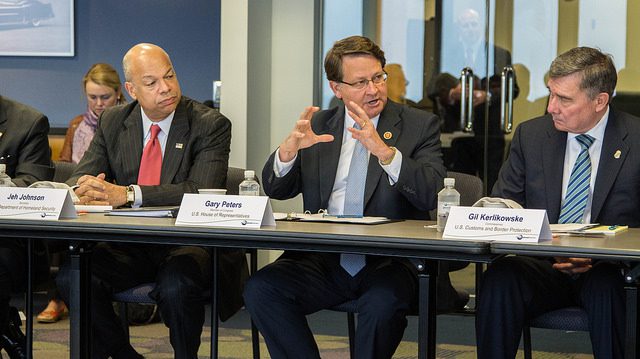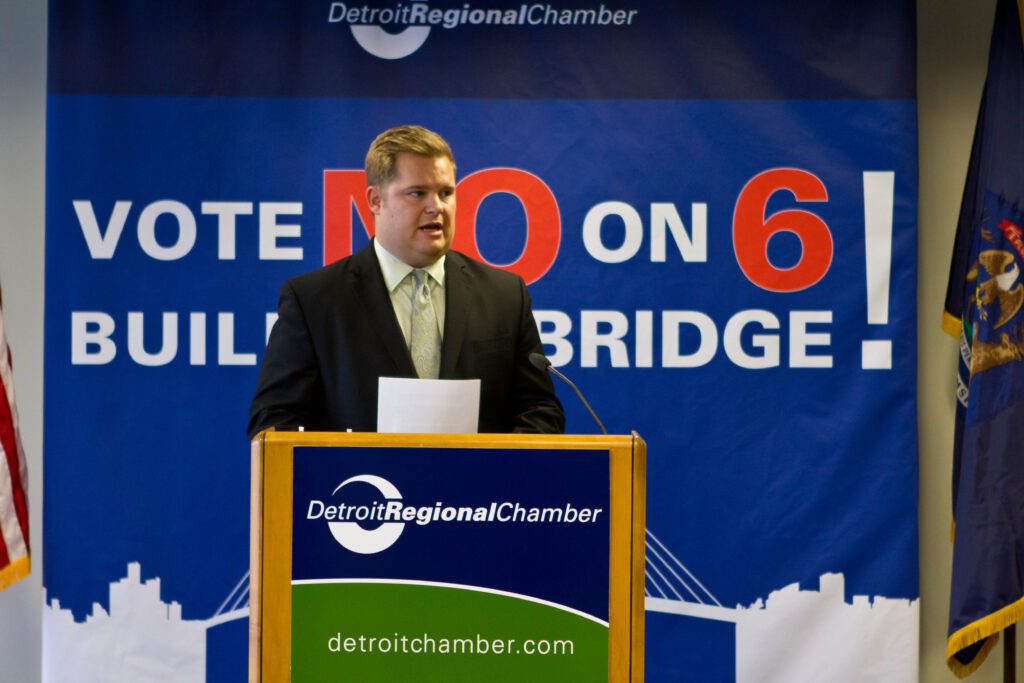With more than 200 million people and approximately $500 billion in goods moving across the Canadian-U.S. border annually, maintaining that flow had been a long-standing Chamber priority since the early 2000s.
Michigan accounted for more than half of the total U.S. trade with Canada, with almost all of it coming via the Detroit and Port Huron international border crossings. In 2008, total trade between Michigan and Canada exceeded $67.4 billion with Canada serving as the state’s most important trading partner.
Protecting that flow from congestion and delays gained prominence during and after the Great Recession, as did worries about the capacity of Michigan’s infrastructure. The Chamber began to emerge as a vocal advocate for the project and a supporter of the Detroit River International Crossing (DRIC) Report, which reaffirmed support for the project by providing traffic numbers to the legislature to clarify the need for a second span.
“Congestion and delays at the border crossings have been an issue for several years and, if not addressed, can impact individual businesses and, ultimately, the overall economy. By 2030, if we do not address congestion problems, the Michigan-Ontario border would cost the economies of Michigan and Ontario a total of $6.3 billion in U.S. production annually,” stated an excerpt from “The Economic Impact of the Border” fact sheet put out by the Chamber and SEMCOG, which cited the DRIC Report.
Under both Baruah and the Chamber government relations team there before him, the Chamber advocated for building a span to add redundancy to the aging 75-year-old Ambassador Bridge to protect and enhance one of North America’s busiest trade crossings while protecting the automotive industry and its need for just-in-time delivery.







